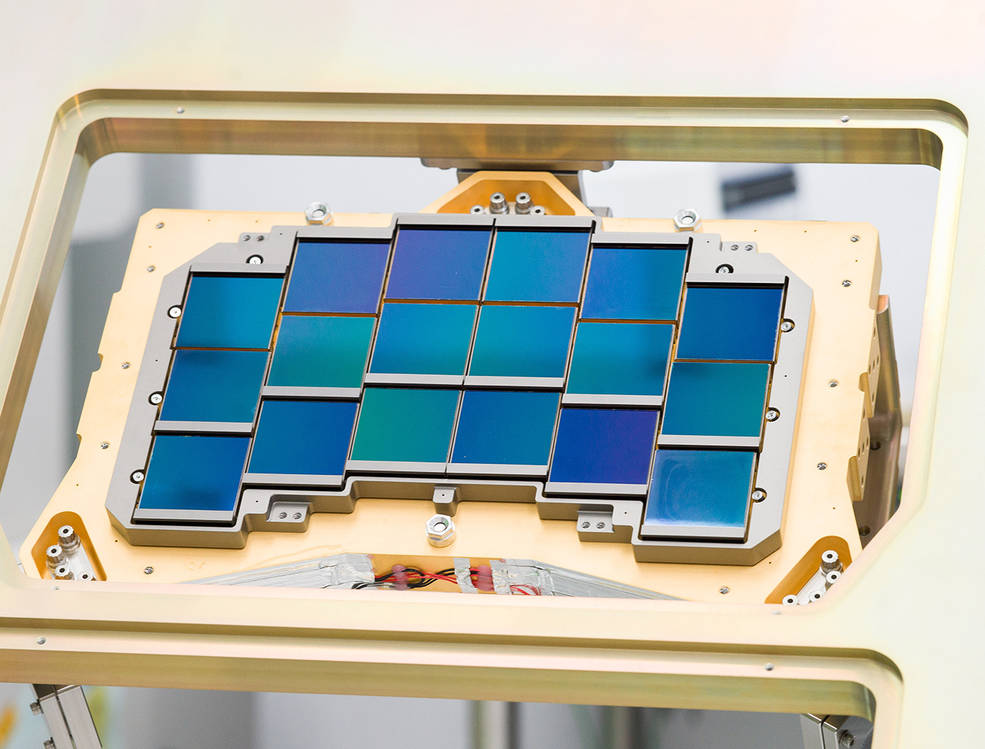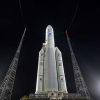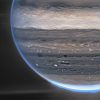How the Roman Space Telescope will Change our View of the Universe
The JWST successor will give us a view 200 times wider than Hubble and help us unlock the secrets of dark energy
The expansion of the universe is accelerating.
But this universe doesn’t run on fuel. It runs on something that sounds much more ominous.
Dark energy.
What is dark energy? Well, we don’t really know because we cannot directly observe or measure it. We do know that dark energy is one of three fundamental components of the universe, along with matter and radiation. We know that dark energy makes up about 68 percent of the total energy of the observable universe and that its power doesn’t dilute the more space it travels. We know that dark energy does actually exist, because we can indirectly measure its effects on the universe at large through the examination of supernovae, the cosmic microwave background, and the study of large-scale wave patterns of mass density.
Dark energy is a bit of a known-unknown. And we may never understand how it emanates from the Big Bang and continues to push the universe apart.
That doesn’t mean we won’t keep trying to understand dark energy and the universe at large.
The Roman Space Telescope will attempt to give us some answers. Dubbed the “wide-eyed cousin of the Hubble Space Telescope,” NASA is scheduled to launch Roman in 2027 and use its mass of infrared sensors to obtain the most expansive view of the universe in history. The idea is to understand the architecture of the universe by mapping, “how matter is structured and distributed throughout the cosmos and measure how the universe has expanded over time. In the process, the mission will study galaxies across cosmic time, from the present back to when the universe was only half a billion years old, or about 4 percent of its current age.”
Combined with the still operating Hubble Space Telescope and the stunning success of the James Webb Space Telescope, Roman will help us solve some of the universe’s largest mysteries.
Roman will take up the mantle of the Hubble telescope, just in a much bigger way. Though Hubble and Roman will have the same-sized primary mirror (7.9 feet or 2.4 meters), Roman is designed to see a much wider swath of the universe with a field of view that is 100 times wider than that of Hubble. When it is launched and situated in its permanent orbit at Lagrange 2 (930,000 miles from Earth), Roman will be able to image 50 times as much sky in five years as Hubble has been able to do in 30. In addition, Roman will allow for the study of dark energy’s twin—dark matter—as well as perform spectroscopy of thousands of potential exoplanets. In the process, the Roman Space Telescope will push the bounds of the field of near-infrared science.
Roman will be equipped with two tools to achieve its missions: the primary Wide Field Instrument (WFI) and the Coronagraph Instrument.
The Wide Field Instrument is a 300 megapixel (300 million pixels) that will help researchers see back into the earliest moments of the universe. Like the Hubble telescope, the WFI’s primary mirror will be 2.4 meters wide, but a lot has changed in technology since Hubble was launched in 1990. The WFI will be equipped with 18 sensor detectors — built by Teledyne Imaging Sensors — each with 16 million pixels which will allow it to view a much wider patch of sky than Hubble’s Wide Field Camera 3 infrared instrument.
“The heart of Roman’s detectors are millions of mercury-cadmium-telluride photodiodes, which are sensors that convert light into an electrical current – one for each pixel,” Greg Mosby, a research astrophysicist at NASA’s Goddard Space Flight Center, said upon examination of the sensors in June 2021. “One of the reasons we chose this material is because by varying the amount of cadmium, we can tune the detector to have a specific cutoff wavelength. That allows us to focus more precisely on the wavelengths of light we’re trying to see.”
Teledyne originally won the contract to provide 24 infrared sensor chip assemblies (18 for the telescope and six for spares that can be used in other projects) and delivered 28 SCAs. The SCA is called the H4RG-10 and is 4,096×4,096 pixels, with each pixel 10×10 microns in size. Eighteen of the H4RG-10 SCAs are in the focal plane mosaic of Roman, totalling over 300 million pixels. Together, the SCAs make for the largest infrared focal plane ever made, for space or ground-based facilities.
The photodiodes were secured to the base of the detector layer by layer using an element called indium. “If we scaled one of Roman’s detectors up to be as long as an Olympic-size swimming pool, the indium blobs would be less than half an inch apart. This precise alignment ensures that each of the sensors will operate independently,” NASA wrote.

Credits: NASA/Chris Gunn
In addition to studying dark energy through massive infrared images of the universe, the camera will also go on the hunt for exoplanets around nearby stars. Using microlensing techniques, Roman will look at 100 million stars for hundreds of days in search of planets. What is truly spectacular is that the telescope will be able to find rocky worlds the size of Mars (which is about half the size of Earth). To date, most discovered exoplanets have been large gas giants orbiting close to their home stars, which will make Roman’s ability to find much smaller rocky planets potentially one of its most impactful skills.
Using the Coronagraph for direct imaging of exoplanets
Astrophysicists use five primary methods of discovering and studying exoplanets. By far the most common is the transit method, which looks for the ever so slightly dimming of a star as a planet traverses the plane between its light and our observation point. Direct imaging of exoplanets is a much more difficult proposition, because the light of the star washes out the view of our sensors.
Hence, the need for some sunglasses.
A coronagraph is a telescope tool that blocks out the light of a star, allowing us to get a much clearer look of an exoplanet to the point where we can use spectroscopy to measure its light and thus its chemical makeup. Two instruments (NIRcam and MIRI) on the James Webb Space Telescope have coronagraphs. Earth-based telescopes such as the Very Large Telescope in Chile have used coronagraphs to directly image proto-planetary systems.
The Roman Space Telescope second primary tool will be the Coronagraph Instrument and be used to study exoplanets, looking for water or methane or other potential signs of life.
“The two flexible mirrors inside the Coronagraph are key components. As light that has traveled tens of light-years from an exoplanet enters the telescope, thousands of actuators move like pistons, changing the shape of the mirrors in real time. The flexing of these “deformable mirrors” compensates for tiny flaws and changes in the telescope’s optics,” NASA wrote. “The instrument’s deformable mirrors and other advanced technology — known as “active wavefront control” — should mean a leap of 100 to 1,000 times the capability of previous coronagraphs.”
Piecing together the history of the universe
The James Webb Space Telescope was designed to peer into the earliest moments after the Big Bang and give us important evidence of the primordial universe. The Roman Space Telescope will take us a step further to study the evolution of the universe, such as how the earliest galaxies formed, spread out, and faded from our view. Roman will be able to measure the chemical makeup of those universes and via their wavelength spectrum, giving us clues as to what they were composed of and what that means.
“Why did star formation peak and then decline? Why did some galaxies suddenly stop forming stars while others faded out gradually? How important were local influences like the number of galactic neighbors in shaping this evolution?” NASA wrote.
Roman will help give us the answers by showing us the architecture of the early universe, while also helping us piece together how dark energy played a role in pushing those galaxies away from each other.



 On the Way Up: How the James Webb Space Telescope Will Use Infrared to Study the Early Universe
On the Way Up: How the James Webb Space Telescope Will Use Infrared to Study the Early Universe  The James Webb Space Telescope: A New Look at Jupiter
The James Webb Space Telescope: A New Look at Jupiter 